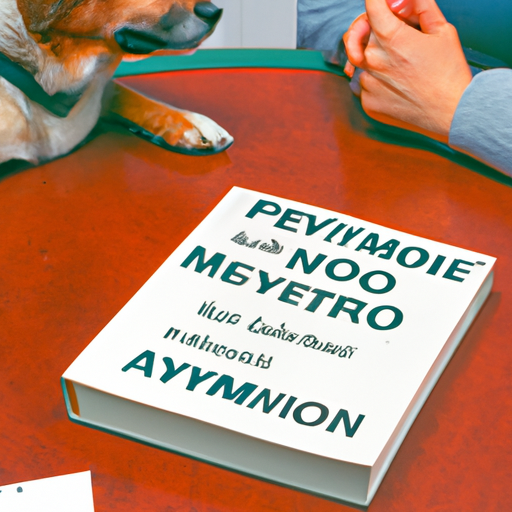1. Understanding Pyometra
Before we dive into preventive measures, it’s essential you understand what pyometra is. It is a serious and life-threatening condition that can affect unspayed female dogs. The term “pyometra” is derived from Latin words, “pyo” meaning pus and “metra” meaning uterus. The condition involves a bacterial infection in the uterus, leading to pus accumulation, enlargement of the uterus, and in severe cases, uterine rupture spreading the infection to the abdominal cavity.
2. Recognizing the Symptoms
Your dog can’t tell you when she’s feeling unwell, so it’s up to you to recognize the signs of pyometra. Common symptoms include:
- Increased thirst and urination
- Loss of appetite
- Vomiting and diarrhoea
- Abdominal swelling
- Lethargy
- Fever
- Pus-like discharge from the vulva
If you notice any of these symptoms, seek veterinary help immediately.
3. Prevention Methods
Now, let’s discuss how you can prevent pyometra in your dog without resorting to spaying.
Regular Vet Check-ups
Regular veterinary check-ups are crucial for early detection and prevention of pyometra. Your vet can monitor your dog’s health and suggest preventive measures.
Hormone Therapy
Hormone therapy is another preventive measure. However, it should only be used under veterinary supervision as misuse can lead to other health complications.
Hygiene
Maintaining good hygiene, especially during your dog’s heat cycle, can help prevent bacterial infections that lead to pyometra.
Diet and Exercise
A balanced diet and regular exercise can boost your dog’s immune system, making her less susceptible to infections.
4. Risks and Complications
While it’s possible to prevent pyometra without spaying, it’s important to understand the risks involved.
| Method | Risks |
|---|---|
| Regular Vet Check-ups | Missed diagnosis |
| Hormone Therapy | Side effects and complications |
| Good Hygiene | Ineffective in prevention |
| Diet and Exercise | Ineffective in prevention |
Remember, spaying is the most effective way to prevent pyometra. If you choose not to spay your dog, be prepared to be extra diligent about her health.
5. FAQs
Here are some frequently asked questions about preventing pyometra in dogs without spaying.
Q: What is the best age to spay a dog to prevent pyometra?
A: Most vets recommend spaying before the first heat cycle, usually between six to nine months of age.
Q: Can pyometra be prevented through natural methods?
A: While a healthy diet and good hygiene can help, they are not guaranteed methods of prevention.
Q: Is pyometra contagious to other dogs or humans?
A: No, pyometra is not contagious. It’s a bacterial infection in the uterus of female dogs.
Remember, as a caregiver, you’re responsible for your dog’s health. Stay informed, stay observant, and don’t hesitate to seek veterinary help when needed.



